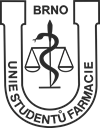Section of Chemistry
-
10:15 Veronika Farková
GC×GC FOR THE STUDY OF FATTY ACID PROFILES IN BOVINE COLOSTRUM FOR PRODUCTION OF NUTRACEUTICAL AND MEDICINAL SUPPLEMENTS
Authors: Veronika Farková1,2, Ludmila Křížová1,3, Steven Mascrez2, Damien Eggermont2, Giorgia Purcaro2, Tomáš Kašparovský1
1 Department of Biochemistry, Faculty of Science, Masaryk University, Brno, Czech Republic
2 Gembloux Agro-Bio Tech, University of Liège, Gembloux, Belgium
3 Department of Animal Breeding, Animal Nutrition and Biochemistry, Faculty of Veterinary Hygiene and Ecology, University of Veterinary Sciences, Brno, Czech Republic
e-mail: krestakova@mail.muni.cz
Key words: bovine colostrum, GC×GC, fatty acids
Bovine colostrum is an important source of a highly concentrated complex of nutrients. It contains nutritional and biologically active compounds needed for the early nutrition of a newborn calf. Colostrum is produced by cows within the first 72 h after parturition, later changing to immature milk. Due to its unique composition, bovine colostrum and colostrum-based products are recently used as dietary, nutraceutical, and medicinal-supplements for the prevention and healing of a number of human diseases. Although the variation in the content of many nutritional and bioactive compounds in bovine colostrum has been widely studied, the information on fatty acid (FA) profile changes during the first days of lactation is lacking.
The goal of our work was to optimize the extraction and derivatization of FAs from bovine colostrum and track the changes in FA profiles in colostrum and immature milk during the first four days of lactation to evaluate their possible impact on human health. Because of the complexity of the sample, comprehensive two-dimensional gas chromatography with flame ionization detection (GC×GC-FID) was used. This method provides a better separation, identification, and semi-quantification for such a complex matrix. The colostrum was collected from eight Czech Fleckvieh cows on a private dairy farm (L. Klíčová, Božice, CZ), during morning milking for the first four days of lactation.
The results showed that the levels of FAs were changing over time. We have demonstrated that colostrum from later phases of lactation had a more favorable composition of milk fat from a human nutrition point of view. As each fatty acid has a different metabolic function in metabolism, the day of lactation should be considered in the production of colostrum-based products with specific compositions for nutraceutical and medicinal purposes.
-
10:30 Tomáš Crha
OPTIMALIZATION OF ELSD PARAMETERS FOR HPLC CARBOHYDRATES ANALYSIS WITH AN ARTIFICIAL NEURAL NETWORK
Authors: Tomas Crha1, Jiri Pazourek1
1 Department of Chemical Drugs, Faculty of Pharmacy, Masaryk University
e-mail: crhat@pharm.muni.cz
Key words: carbohydrates, HILIC, HPLC, CCM, ELSD optimalization
Evaporative light-scattering detector (ELSD) is a simple and inexpensive way to determinate analytes without a suitable chromophore. Three ‘analogue’ parameters for ELSD can be set: nebulization gas flow, temperature of an evaporator and temperature of a nebulizer. For better and faster optimalization of these parameters, a central composite (CCM) response surface design with an artificial neural network (ANN) can be used with advantage. Output of the ANN is a prediction, which gives us probably the best ELSD condition for sugars analysis. Of course, the prediction must be confirmed and verified with HPLC-ELSD measurements.
Optimalization was performed on a Dionex UltiMate 3000 HPLC apparatus (Thermo) and an ELSD Varian 380-LC (Varian) in HILIC mode. Chromatographic conditions were set at the same values during ELSD optimization: MF composition 82:18 ACN:30mM ammonium formiate buffer pH 3.8, MF flow rate 2 mL/min, column temperature 10°C, SF silica modified by hydroxyl groups (column HALO Penta-HILIC 150 x 4.6 mm; 2.7 µm, AMT). Mixture of sugars standards had a concentration of 1 mg/mL and consisted of glucose, sucrose, isomaltulose and lactose. Injected volume was 5 µL. Obtained data was used for ANN learning in software TRAJAN. Input data for ANN were peak area, peak high of sucrose and isomaltulose and resolution sucrose-isomaltulose.
Central composite model data was obtained from 16 methods, each of them with different combination of three ‘analogue’ parameters of the ELSD. Limit values of these parameters were: temperature of nebulizer 30-60°C, temperature of evaporator 30-80°C and nebulization gas flow rate1-2 slm of nitrogen.
-
10:45 Sandra Bugdolová
ISOTACHOPHORETIC ANALYSIS OF DRUGS CONTAINING ACETYLSALICYLIC ACID
Authors: Sandra Bugdolová1, Přemysl Lubal1
1 Department of Chemistry, Faculty of Science, Masaryk University. Czech Republic
e-mail: bugdolova.sandra@mail.muni.cz
Key words: isotachophoresis (ITP), acetylsalicylic acid (ASA), alkaline hydrolysis, kinetic study
Acetylsalicylic acid (ASA) is known as a weak aromatic carboxylic acid, commonly known under the trade name, Aspirin. It is a white crystalline substance, stable in the air, however, slowly hydrolysing in contact with moisture. The maximal ASA stability appears at pH 2-3, followed by slow hydrolysis at pH 4‑8, which becomes faster at pH 11-12. Hydrolysis of acetylsalicylic acid is extensively studied to better understand the stability in biological systems.1
Isotachophoresis (ITP) is an electromigration separation technique which, in our study, was used for analysis of drugs2, containing ASA. The kinetic conversion of ASA to acetic acid (AA) and salicylic acid (SA) in alkaline medium using ITP technique was also studied.1 The experimental parameters of ITP analytical procedure (composition and pH of leading and terminating electrolytes, the current and time of analysis) have been successfully optimized to carry out analysis of mixture acetylsalicylic, salicylic and acetic acids. This analytical method could be used for testing of stability of pharmaceutical formulations. In addition, it was used for estimation of rate constants describing the ASA hydrolysis in basic medium. This ITP method was then applied for the quantitative analysis of Aspirin-based drugs by two different approaches which will be in discussed in detail in presentation.
The study was supported by projects (MUNI/A/1421/2022, LTC20044).
References
1 B. Kumar, K.K. Ghosh, P.R. Dafonte: Comparative study of the cationic surfactants and their influence on the alkaline hydrolysis of acetylsalicylic acid. Int. J. Chem. Kin. 2011, 43(1), 1-8.
2 B. Buszewski et al: Electromigration Techniques: Theory and Practice. Springer Berlin Heidelberg 2013.
-
11:00 Markéta Vejvodová
SINGLE-CELL AND HIGH-RESOLUTION ANALYSIS OF ELEMENTS IN CELLS AND TISSUE CULTURES USING LA-ICP-MS
Authors: Markéta Vejvodová1, Polina Nadtochaeva2, Michael Killinger1,3, Tomáš Vaculovič1, Monika Pávková Goldbergová2 and Viktor Kanický1,2
1Department of Chemistry, Faculty of Science, Masaryk University
2Department of Pathological Physiology, Faculty of Medicine, Masaryk University
3Institute of Analytical Chemistry, Czech Academy of Sciences
e-mail: 474005@muni.cz
Key words: Single-cell analysis, bioimaging, LA-ICP-MS, High-resolution analysis
Nickel (Ni) and titanium (Ti) are most commonly used as joint replacements. In some cases, such as inflammation, bacterial infection or increased mechanical stress can cause these elements to be released and penetrate surrounding tissue or even accumulate in specific organs. Only a few methods can be used for the analysis of ultra concentrations of ions in animal fluids and tissue, but almost no one can also characterize the distribution of the ion. Even though laser ablation inductively coupled plasma spectrometry (LA-ICP-MS) is an analytical method for analyzing an inorganic sample, especially geological ones, today, it is being used more and more to determine the distribution of elements in different types of biological samples Bioimaging using LA-ICP-MS can be used to clarify questions of biomedical research such as bioaccumulation and bioavailability of elements in the tissues and provides insight into the basic chemical composition of living organisms.1, 2
The main objective is to develop a method to determine the distribution of elements at the cellular level, which means a mapping with a resolution at the level of micrometers. From a chemical point of view, a high-sensitivity method for the determination of selected elements (Ni, Ti) in tissues or even in individual cells will be developed and the behavior of these ions in the animal organism will be characterized.
References
1. Mikulewicz et al., Biological Trace Element Research, 142 (2011) 865-889, Cytocompatibility of Medical Biomaterials Containing Nickel by Osteoblasts: a Systematic Literature Review.
2. A. Doble et al., Chemical Reviews, 121 (2021) 11769-11822, Laser Ablation-Inductively Coupled Plasma-Mass Spectrometry Imaging in Biology.
-
11:15 Hubert Veselý
DESIGN AND SYNTHESIS OF NEW FLUOROPHORES FOR THE DETECTION OF BIOMOLECULES
Authors: Hubert Veselý1, Pavel Bobál1
1 Department of Chemical Drugs, Faculty of Pharmacy, Masaryk University, Czech Republic
e-mail: 85340@mail.muni.cz
Key words: fluorophore, pyrrole, glycan
Changes in the composition of glycans correlate with the progression of many diseases; therefore, they are investigated as disease markers. However, their analysis is difficult because they do not contain a chromophore or charges that would enable their electrophoretic separation. Our goal was to develop a new fluorescent marker covalently bound to glycans providing fast labelling kinetics, high quantum yield, increased detection sensitivity using mass spectroscopy (MS), and at the same time carrying a charge in the structure, which will enable the studied glycans to be separated electrophoretically.
The basic skeleton of this fluorophore is based on pyrrole and indolizine. The synthesis was based on two building blocks, synthon A and synthon B, which were subsequently connected. The plan was to prepare variants of the fluorophore carrying electron-donating or electron-accepting groups on synthon A. These substitutions allow for variability in the wavelength of the absorption maximum and thus in the wavelength of fluorescence. The molecule also carries a trimethylammonium functional group and a propanoate chain, which is necessary for the attachment of the fluorophore to the glycan.
Synthon B and synthon A were prepared without substitution at the 4-phenyl position and with methyl and methoxycarbonyl groups at this position. The methyl derivative was used for the synthesis of the fluorophore backbone. This structure showed fluorescence in the ultraviolet (UV) region of the spectrum. Subsequently, the substance was oxidized to an aldehyde, which will have to be converted to a quaternary ammonium compound. Additionally, the side chain carrying the methyl ester function will need to be converted to a hydrazide.
The prepared substances will also be characterized in cooperation with the Institute of Analytical Chemistry of the Academy of Sciences of the Czech Republic. The usability of the newly developed fluorophores will be demonstrated by profiling glycoproteins associated with breast cancer.
The study was supported by the project MUNI/A/1232/2021.

-
11:30 Veronika Ballayová
SCHIFF BASES AS POTENTIAL THERAPEUTIC AGENTS
Authors: Veronika Ballayová1, Tereza Kauerová2, Peter Kollár2, Oldřich Farsa1
1 Department of Chemical Drugs, Faculty of Pharmacy, Masaryk University
2 Department of Pharmacology and Toxicology, Faculty of Pharmacy, Masaryk University
e-mail: ballayovav@pharm.muni.cz
Keywords: thiosemicarbazone derivative of acetophenone, Schiff bases, metalloenzyme inhibitor, aminopeptidase N
Schiff bases, which are carrying imine or azomethine functional group, are versatile pharmacophores capable of forming chelating complexes with various metals. Metal complexes play a crucial role in pharmaceutical sciences due to their wide and significant activities.1 Synthesized basic thiosemicarbazone and semicarbazone derivatives of acetophenone may be bioactive compounds as well.
Through three-step synthesis it is possible to obtain three arene substitution isomers of basic thiosemicarbazone and semicarbazone derivatives of acetophenone. The initial step of the synthesis is the chloroacetylation of aminoacetophenone, followed by substitution with a secondary amine. Symmetrical secondary amines and heterocyclic amines with saturated heterocyclic skeleton were used for substitution. Final derivatives are obtained in the last step of the synthesis.
Many Schiff bases appear to be important intermediates in a number of enzymatic reactions also due to the above-mentioned complex formation. One of the possible enzymes is aminopeptidase N (AP-N), or membrane alanyl aminopeptidase. This ubiquitous enzyme is a neutral zinc-binding metalloenzyme. Potential inhibitors of AP-N may offer effective and broad-spectrum therapy. Another possible target enzyme is a receptor tyrosine kinase from the class of Epidermal growth factor receptor (ErbB) family. These enzymes are associated with the development of neurodegenerative diseases or with the development of a wide variety of types of solid tumor. Synthesized compounds with the best inhibitory activity on the AP-N enzyme underwent testing for inhibition of cell proliferation on the three different cell lines. A simple QSAR model describing the dependence between the inhibitory activity expressed as IC50 and the descriptors derived from the chemical structure was established.
The study was supported by the project CZ.02.2.69/0.0/0.0/19_073/0016943 Internal grant agency of Masaryk University (MUNI/IGA/0916/2021).
References
1 Sinicropi, M.S.; Ceramella, J.; Iacopetta, D.; Catalano, A.; Mariconda, A.; Rosano, C.; Saturnino, C.; El-Kashef, H.; Longo, P. Metal Complexes with Schiff Bases: Data Collection and Recent Studies on Biological Activities. Int. J. Mol. Sci. 2022, 23, 14840.
-
11:45 Peter Zubáč
SIMPLIFICATION STRATEGIES IN 4-PIPERIDINONE SYNTHESIS. A FASTER AND GREENER ALTERNATIVE TO CLASSIC APPROACHES
Authors: Peter Zubáč1, Oldřich Farsa1 and Radka Žáčková1
1 Department of Chemical Drugs, Faculty of Pharmacy, Masaryk University
e-mail: peter.zubac@gmail.com
Key words: Piperidinone, One-step synthesis, Reactivity Umpolung, Quaternary salt
Derivatives of 4-piperidinone are of great importance in synthesis of multiple drugs, cosmetics, and industrial chemicals. Classic approach for their preparation from respective primary amines involves mainly Dieckmann cyclisation – a complex multiple-step reaction.
We propose faster and greener alternative – one-step reaction between primary ([hetero]aryl)alkylamine and 4-oxo-1,1-dimethylpiperidinium iodide (from 1-methylpiperidone, a cheap and commercially available reagent and methyl iodide) in EtOH/H2O mixture under basic conditions (K2CO3). Although this reaction Umpolung1 is known for decades, our added value is in details: omitting vacuum distillation or column chromatography, shrinking to simple Thick-Layer-Silica-Plug filtration using EtOAc:CHCl3 as a ‘mobile phase’ and dimethylamine (byproduct) scavenging via simple scavenger (sodium acrylate), that is intended to bind dimethylamine via an Aza-Michael Reaction and keep it dissolved in aqueous phase.2
Prepared series of piperidinone derivatives and their thiosemicarbazones will be tested for inhibitory activity against Aminopeptidase N according to the research group practice.

References
1 Willand, N.; Folle, B.; Boutillon, Ch.; Verbraeken, L.; Gesquie`re, J.-C.; Tartara, A.; Deprez, B. Tetrahedron Letters 2007, 48, 5007–5011.
2 Amato, J. S.; Chung, J. Y. L.; Cvetovich, R. J.; Reamer, R. A.; Zhao, D.; Zhou, G.; Gong, X. Organic Process Research & Development 2004, 8, 939-941.













